March is Women’s History Month, and we’d like to celebrate the legacies of several local women – in coloring book style, of course. To download the full coloring book put together by the museum, please find it here.
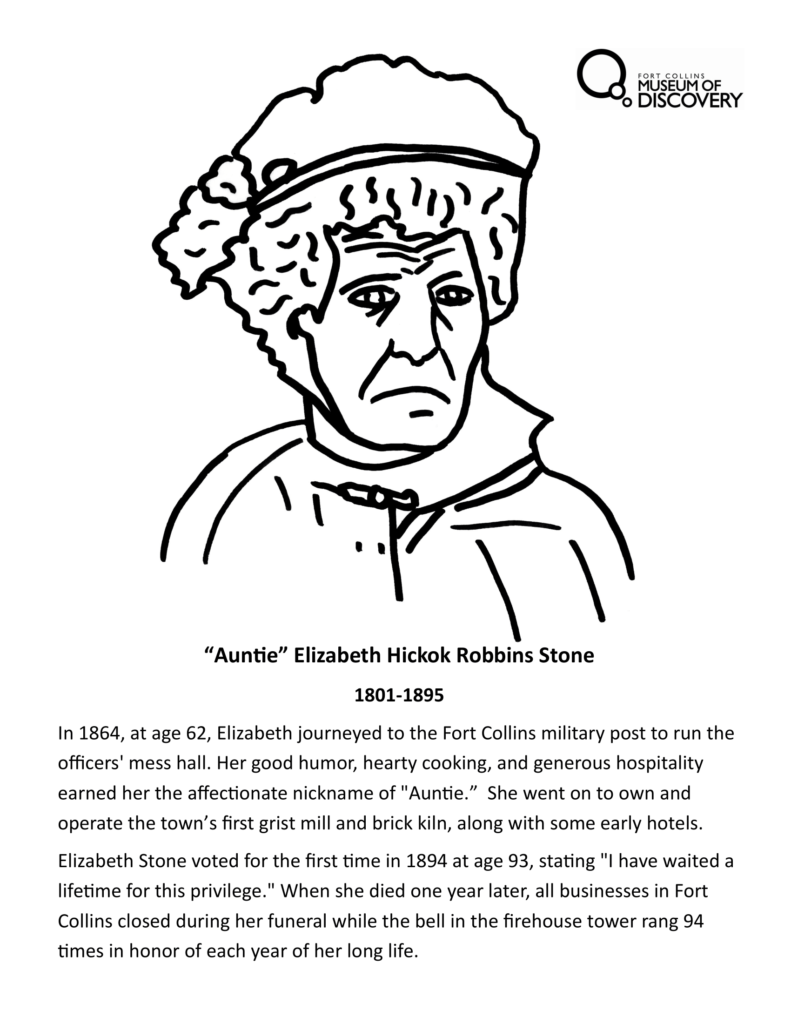
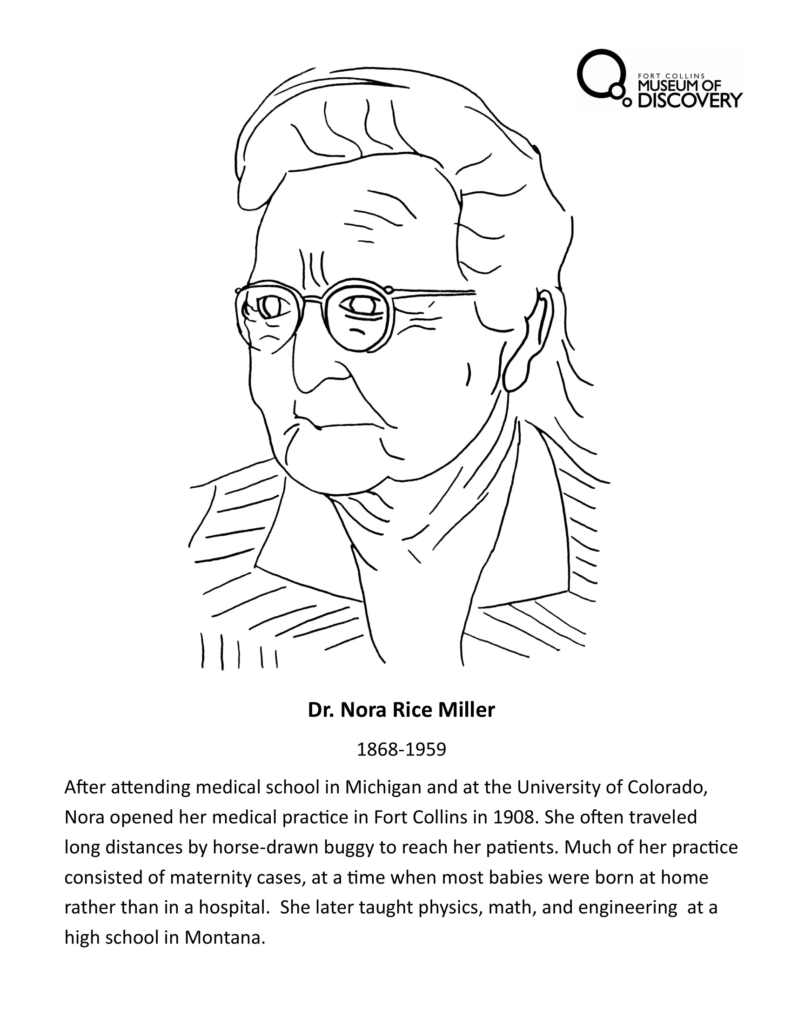

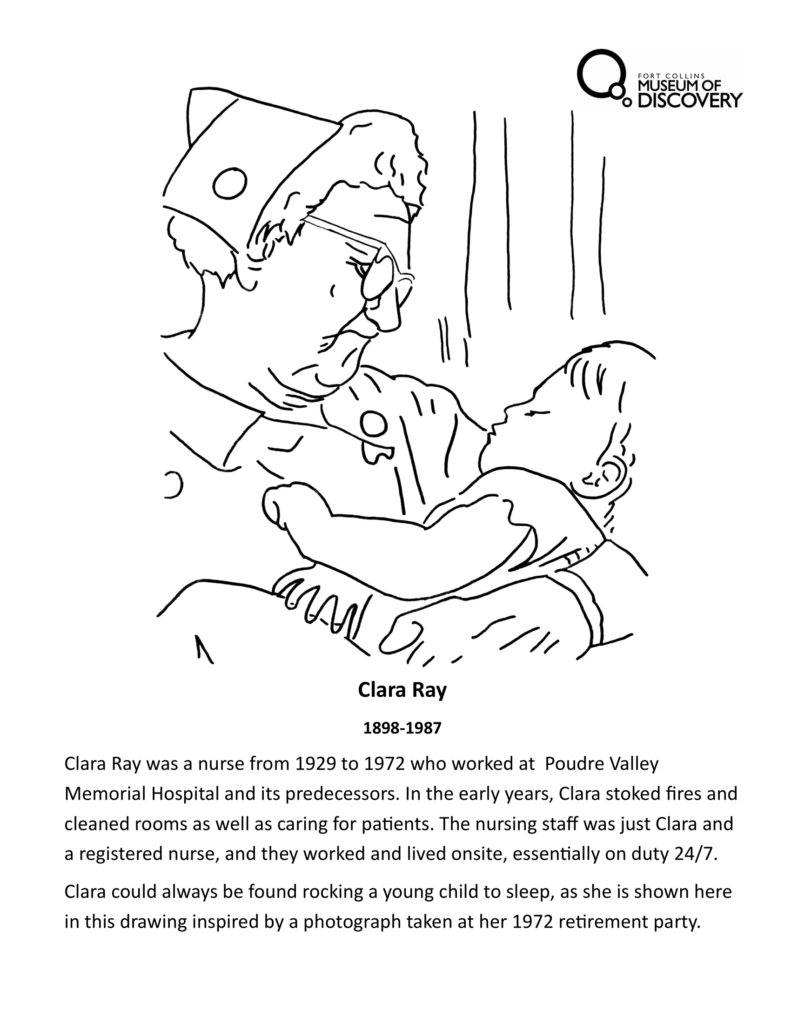
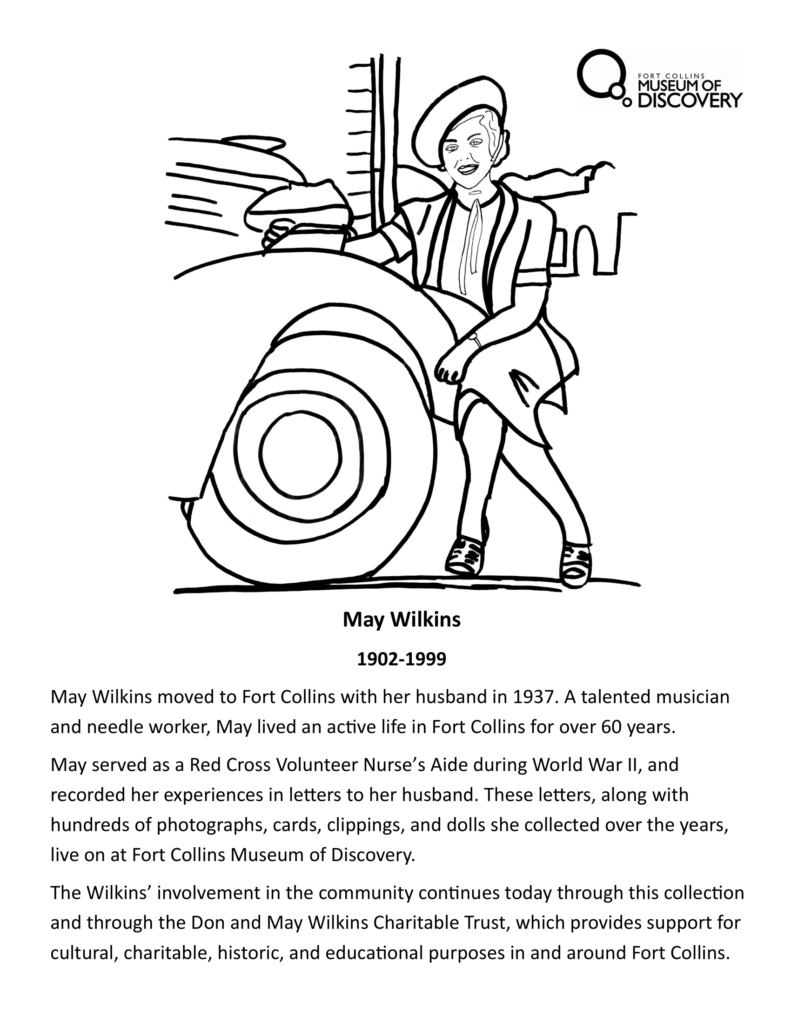
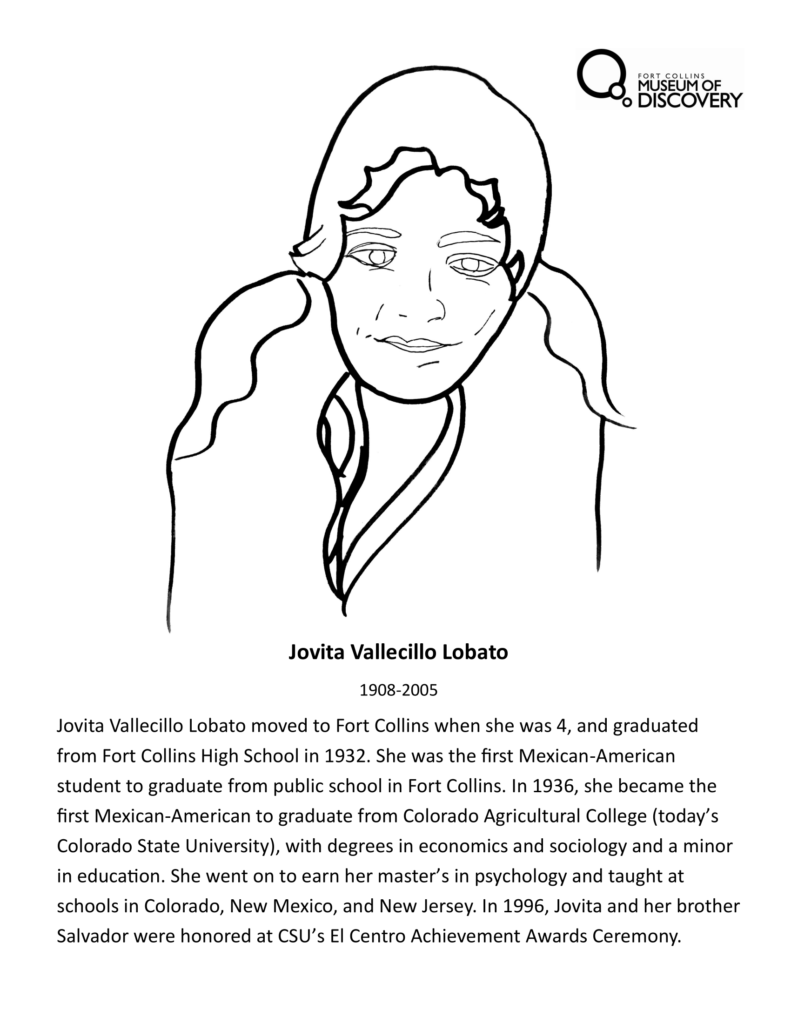
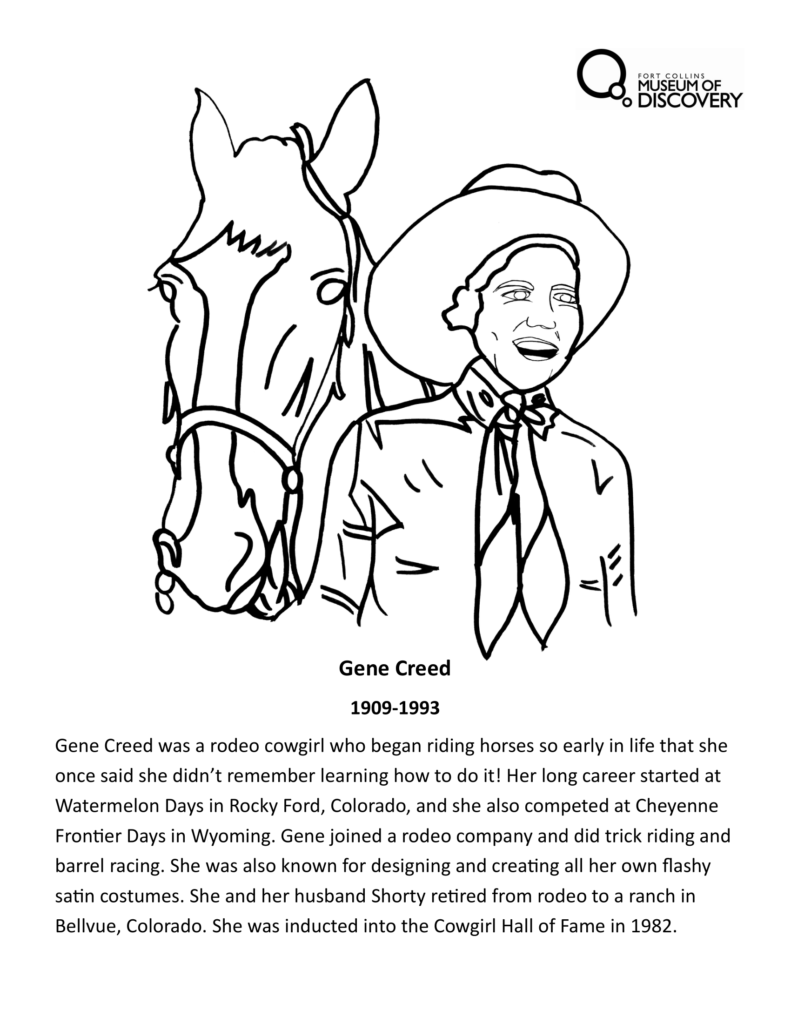
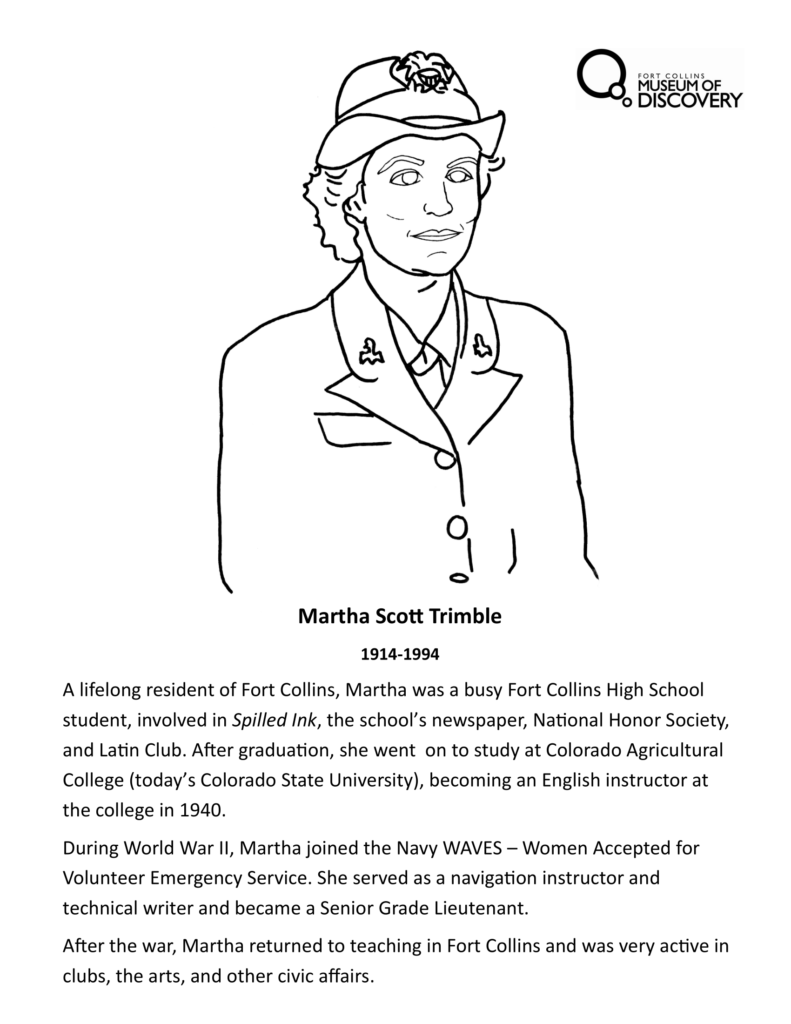
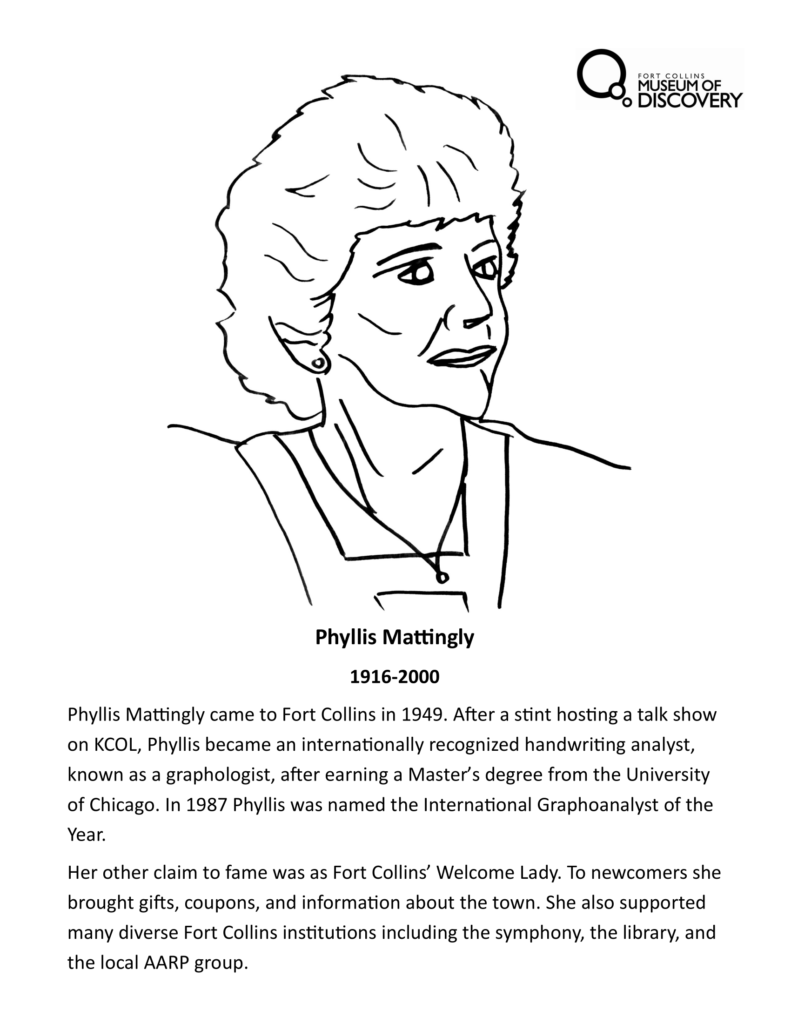

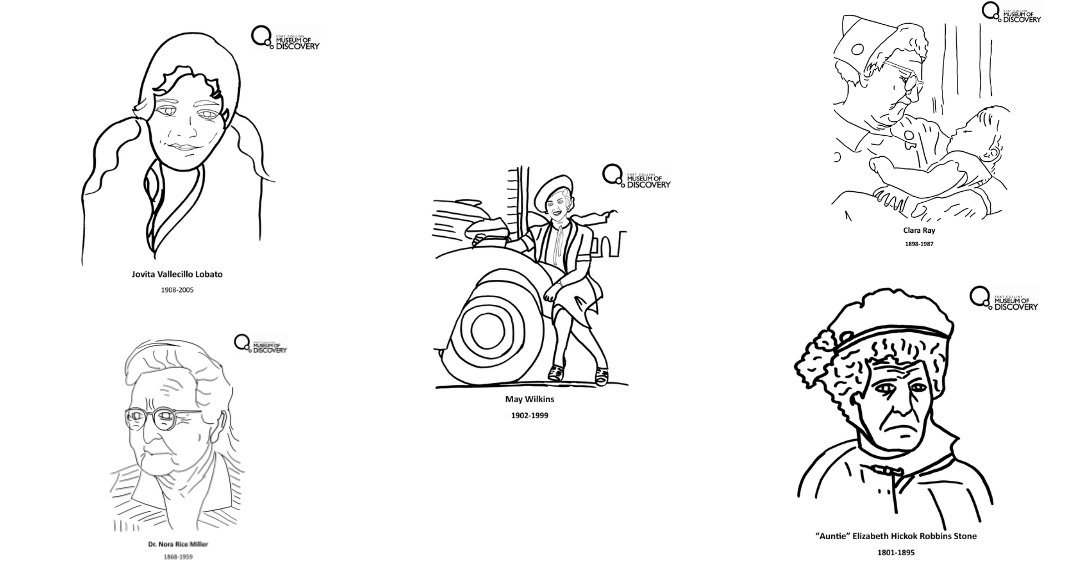
March is Women’s History Month, and we’d like to celebrate the legacies of several local women – in coloring book style, of course. To download the full coloring book put together by the museum, please find it here.










The year 2020 marks the 70th birthday of Leo Fender’s first solid-body electric guitar. It was also the first mass-produced electric guitar in history, and laid the initial yellow bricks on the road to Guitar Oz.

In 1946, the Fender Electric Instruments Company was formed in Fullerton, California. Clarence Leonidas Fender had been born in Anaheim in 1909, and at only 37 years old he would start the company that would lay the bedrock for the modern electric guitar. He had opened his first shop, Fender’s Repair Service, 8 years prior in 1938, but was ready to move on. He turned the radio shop over to his friend Dale Hyatt and went fulltime into the music instrument business. By 1949, Fender guitars and amps were firmly established in the music industry. To the left, a photo shows a young Leo Fender (far right) and others with an early Fender guitar model.
 The year 1949 was also monumental because Leo and coworker George Fullerton completed the first prototype for the famous Esquire guitar. The prototype (pictured to the left) shared a similar body shape with later guitars of the same vein. The shape was a dreadnaught style with a single cutaway, allowing easy access to the upper frets of the guitar. In the next year, 1950, the Fender Electric Instruments Company officially released the first mass produced guitar ever, the Fender Esquire. The biggest change from the prototype to the first model (seen below) was the headstock shape. The Esquire was a solid-body, single pickup electric guitar – a pickup is a magnet that “picks up” the vibration from the strings and sends it to an amp. The pickups on the first Esquires pictured are the metal boxes at the end of the strings. The guitar also had one knob to control the overall volume and one knob to control the tone, or timbre, of the guitar’s pickup. The first advertised color scheme was a black body with a white pick guard, but later produced Esquires had a blonde body with a black pick guitar (as pictured). This first model also did
The year 1949 was also monumental because Leo and coworker George Fullerton completed the first prototype for the famous Esquire guitar. The prototype (pictured to the left) shared a similar body shape with later guitars of the same vein. The shape was a dreadnaught style with a single cutaway, allowing easy access to the upper frets of the guitar. In the next year, 1950, the Fender Electric Instruments Company officially released the first mass produced guitar ever, the Fender Esquire. The biggest change from the prototype to the first model (seen below) was the headstock shape. The Esquire was a solid-body, single pickup electric guitar – a pickup is a magnet that “picks up” the vibration from the strings and sends it to an amp. The pickups on the first Esquires pictured are the metal boxes at the end of the strings. The guitar also had one knob to control the overall volume and one knob to control the tone, or timbre, of the guitar’s pickup. The first advertised color scheme was a black body with a white pick guard, but later produced Esquires had a blonde body with a black pick guitar (as pictured). This first model also did  not have a truss rod. A truss rod is a piece of metal that runs inside and along the neck. The end of the rod can be turned with a tool which will push or pull the neck in one direction or another. This is used to help straighten the neck when the tension from the strings causes it to bend over time. Only about 50 of these first Esquires were made. As orders increased, the needed improvements were recognized by Leo and George. Just months later they set out to revamp their already very popular electric guitar model.
not have a truss rod. A truss rod is a piece of metal that runs inside and along the neck. The end of the rod can be turned with a tool which will push or pull the neck in one direction or another. This is used to help straighten the neck when the tension from the strings causes it to bend over time. Only about 50 of these first Esquires were made. As orders increased, the needed improvements were recognized by Leo and George. Just months later they set out to revamp their already very popular electric guitar model.

Later in 1950, Fender came out with what was shortly known as the Broadcaster (pictured on the left). This model came with a few upgrades which included the addition of a much needed truss rod along with a second pickup, located next to the base of the neck. This pickup, because of its location and construction, had a much rounder and less bright sound. There was also a pickup selector, a switch which would allow the player to turn on one pickup, the other, or both. This variety of tones and combinations made the Broadcaster a much more versatile instrument and the added truss rod made it more durable. At the time, fellow musical instrument company, Gretch, caught popular wind of Fender’s new release and took legal action against the name, due to the conflict of their Gretch Broadkaster drums. Fender agreed to change the name and “Broadcaster” was removed from the Fender headstock. During the time that the company was renaming their flagship guitar, the guitar they were producing had nothing but “Fender” on the headstock. Guitars from this short era are known as Nocasters, hinting to their lack of a visual name. In 1951, Fender rereleased their electric guitar model, and named it the Telecaster. To this day, the Telecaster model still carries its iconic name, form, and sound onto the stage and into the studio through the hands of countless musicians.
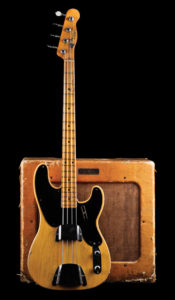 Leo did not stop there in 1951. That same year he released his company’s first electric bass model, known as the Precision Bass (a 1952 model to the left). This model is still mass produced today and is one of the most popular and used bass guitars. Next in line came Leo’s second guitar model, that would achieve him even more historic fame and forever make him an icon in the guitar world. The Fender Stratocaster followed the Telecaster in 1954, and took the world by storm. It has stood atop the pillar of modern guitar as the most recognized shape and symbol of the instrument. It has been used on countless famous recordings and is only second in Fender origin to the one and only Telecaster.
Leo did not stop there in 1951. That same year he released his company’s first electric bass model, known as the Precision Bass (a 1952 model to the left). This model is still mass produced today and is one of the most popular and used bass guitars. Next in line came Leo’s second guitar model, that would achieve him even more historic fame and forever make him an icon in the guitar world. The Fender Stratocaster followed the Telecaster in 1954, and took the world by storm. It has stood atop the pillar of modern guitar as the most recognized shape and symbol of the instrument. It has been used on countless famous recordings and is only second in Fender origin to the one and only Telecaster.


In 1964, Fender began producing their first acoustic style guitars. Later that year, the visually distinctive, offset guitar called the Mustang was released. Unfortunately, Leo Fender began developing health problems at age 55 and decided to sell his company. On January 5th, 1965, Fender sold to Columbia Records Distribution Corps. for $13 million. Throughout the years after Leo’s ownership, Fender has undergone many changes. Regardless, they have remained at the top of the list of guitar manufacturing and developing giants. Even though decades of growth and change have coursed through the Fender name, the legendary shape of the original Esquire holds true in what is still known as the Telecaster. Above is a photo of an old guitar factory line. Today, only high end guitars are handmade, a testament to how popular guitar playing has become.

Happy Birthday to the Fender Esquire! 2020 marks its 70th year in existence. It still remains one of the most recognized and favored guitars around the world and many competing companies create similar styles. The specific photograph to the right is of the 70th anniversary Esquire model released in 2020. It has a special seafoam green finish, but features the classic white pick guard and single pickup. This rerelease is a passionate ode to an all time classic. The Esquire was the first ever mass produced electric guitar, a huge achievement that paved the way for so much. For such a cornerstone in a moment of guitar history, the shape, sound, and love for the Fender Esquire remains timeless.
Continue Reading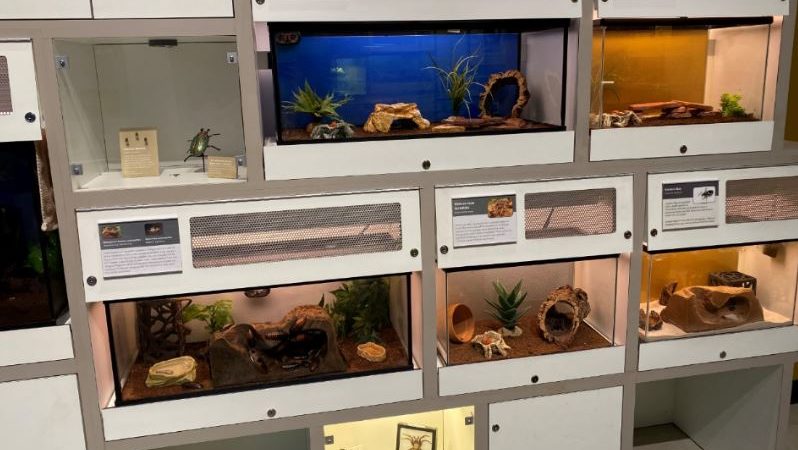
Post written by Alexa Leinaweaver, Live Animal Husbandry Coordinator.
National Wildlife Day is September 4, 2020! To celebrate, let’s explore some of the less well known endangered species in Colorado.
We hear a lot about endangered species these days, as the climate changes around us and human activities challenge wildlife survival. Often the articles and advertisements you see feature fuzzy and adorable animals like the Giant Panda or the Sea Otter. Here in Colorado, our featured endangered wildlife tends to be appealingly majestic, like the Grey Wolf (whose reintroduction to Colorado is on November’s ballot for 2020) or even FCMOD’s beloved Black-footed Ferrets. These are species that definitely deserve attention – but there are many more of our wildlife neighbors that need our attention and help that may not be so cute or exciting. There are so many ignored species in the world that are in difficult or dangerous situations thanks to habitat loss, pollution, water loss, and many other human activities.
Here are just a few of our Colorado wildlife neighbors in need:
Least Tern (Sterna antillarum), Federally Endangered
The Least tern is the smallest member of the gull and tern family. They’re only 9 inches long. They nest in the summer on sandbars along major rivers in the central U.S., including in Colorado. This bird was listed as federally endangered in 1985. A lot of nesting habitat in the U.S. has been lost to the birds because of the ways that humans have changed the river systems: dams and reservoirs; introduction of invasive plants; stabilizing river banks, hydropower, and diverting water.
Bonytail Chub (Gila elegans), Federally Critically Endangered
The bonytail is a freshwater fish that lives in the Colorado River basin. It can grow up to 2 feet long and can live up to 50 years. It was added to the endangered list in 1980, and is now the rarest big-river fish in the Colorado. The bonytail, along with numerous other fish species in the Colorado, suffered drastic population declines after the construction of Hoover Dam and other human projects that divert water from the river and change how the water flowed and pooled. These fish also suffer from competition from non-native fish species that humans have introduced into bonytail habitat. At this time, there is no self-sustaining wild population of these fish, and human-run hatcheries are all that maintains the species.
North Park Phacelia (Phacelia formosula), Federally Endangered
The North Park Phacelia only exists in one place in the entire world: the North Park area in Jackson County. It likes to grow on bare slopes and eroding rocks in ravines in the North Park area, where few other plants are able to survive. This phacelia was listed as federally endangered in 1982. It is threatened by livestock, off-road vehicles, commercial and residential development, and petroleum exploration. It also suffers from the loss of pollinating insects in the area, which it depends on to reproduce.
You may be wondering what you can do to be a better neighbor to these species, and the other species in our beautiful state that are threatened or endangered. Here are some steps that you can try:
Educate yourself. Learn about the different kinds of wildlife that live in Colorado with us, and what kinds of things we humans are doing that are putting them at risk.
Take action. Think about how much water you use, or whether the plants in your yard are native or invasive. Consider how much energy you use leaving on lights in an empty room, or streaming your favorite songs rather than downloading them. Look at how much gas your vehicle uses, or how many plastics or other petroleum products you use on a daily basis. Even a small change you can make in your own behavior can be a help to our endangered neighbors.
Talk to your friends and family about why this wildlife is in danger, and why it’s important to you. Your friends and family care about your thoughts and opinions. Help them to understand how important it is to help all.
Contact your representatives in government. These threatened and endangered species do not have a voice in our government, but you do. If you are old enough, vote for candidates that pay attention to wildlife. But at any age, you can make your voice heard! Make sure that your representatives know how important it is that we are good neighbors to all the wildlife in Colorado, in the country, and in the world.
Follow along with our Daily Discovery! Click here for all activities that you can do at home.
Continue Reading
Post written by Archive & Collections team.
Get Inspired!
In celebration of the 100th anniversary of the ratification of the 19th Amendment, we’re highlighting the paths of local women in Fort Collins history with a series of video presentations created by the Archive & Collections staff at Fort Collins Museum of Discovery.
Today Curator of Collections Linda Moore will present on Polly Brinkhoff, artist and long-time resident of Skin Gulch off Poudre Canyon.
After you have learned about Polly Brinkhoff, be sure to create your very own shrink-plastic charm.
Click here to download the printable Polly Brinkhoff Charm.
Want to download the charm bracelet directions? Click here for a handy PDF!
Follow along with our Daily Discovery! Click here for all activities that you can do at home.
Educational opportunities like this are supported in part by Fort Fund.

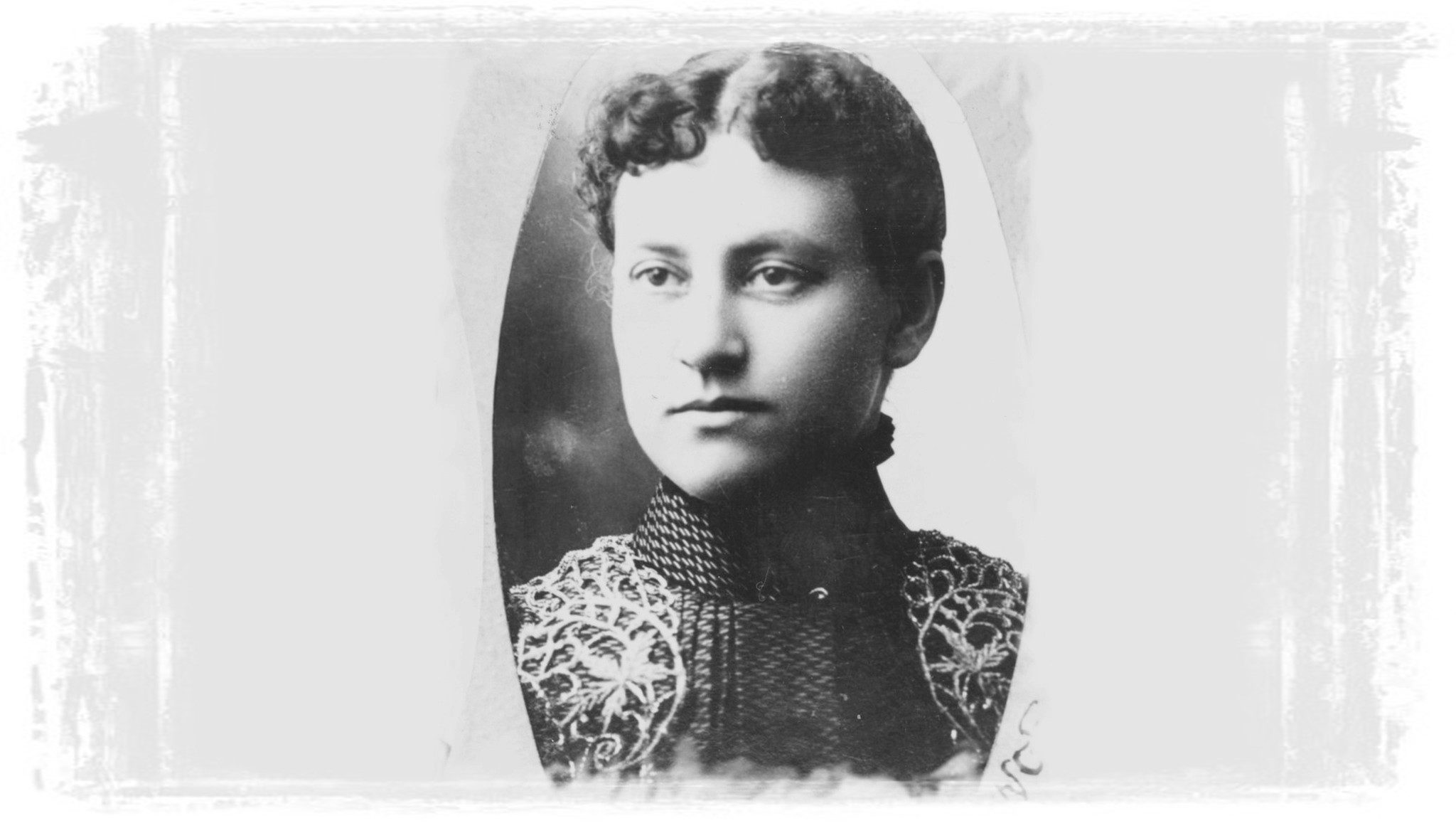
Post written by Archive & Collections team.
Get Inspired!
In celebration of the 100th anniversary of the ratification of the 19th Amendment, we’re highlighting the paths of local women in Fort Collins history with a series of video presentations created by the Archive & Collections staff at Fort Collins Museum of Discovery.
Today Museum Collections Assistant Morgan Wilson will speak about Elizabeth Coy, first woman to graduate from a Colorado institute of higher education.
After you have learned about Elizabeth Coy, be sure to create your very own shrink-plastic charm.
Click here to download the printable Elizabeth Coy Charm.
Want to download the charm bracelet directions? Click here for a handy PDF!
Follow along with our Daily Discovery! Click here for all activities that you can do at home.
Educational opportunities like this are supported in part by Fort Fund.

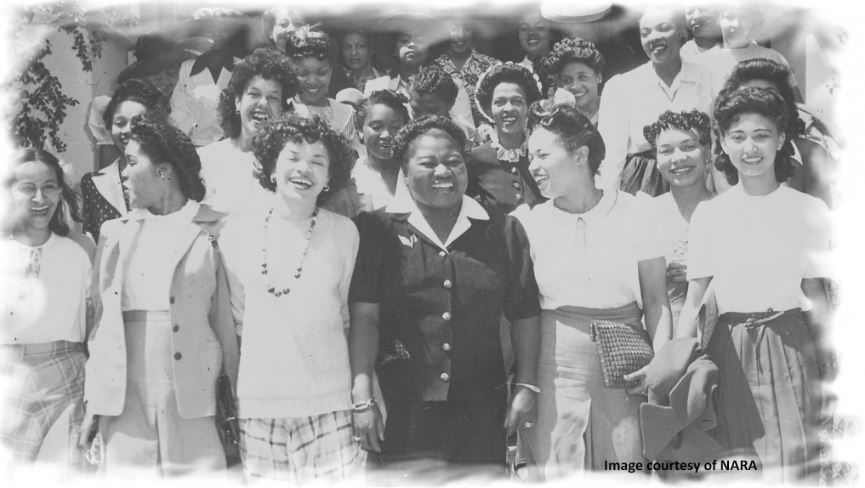
Post written by Archive & Collections team.
Get Inspired!
In celebration of the 100th anniversary of the ratification of the 19th Amendment, we’re highlighting the paths of local women in Fort Collins history with a series of video presentations created by the Archive & Collections staff at Fort Collins Museum of Discovery.
Today Archive Curator Lesley Struc will speak about Hattie McDaniel, Hollywood star who lived in Fort Collins as a child.
After you have learned about Hattie McDaniel, be sure to create your very own shrink-plastic charm.
Click here to download the printable Hattie McDaniel Charm.
Want to download the charm bracelet directions? Click here for a handy PDF!
Follow along with our Daily Discovery! Click here for all activities that you can do at home.
Image credit: NARA
Educational opportunities like this are supported in part by Fort Fund.

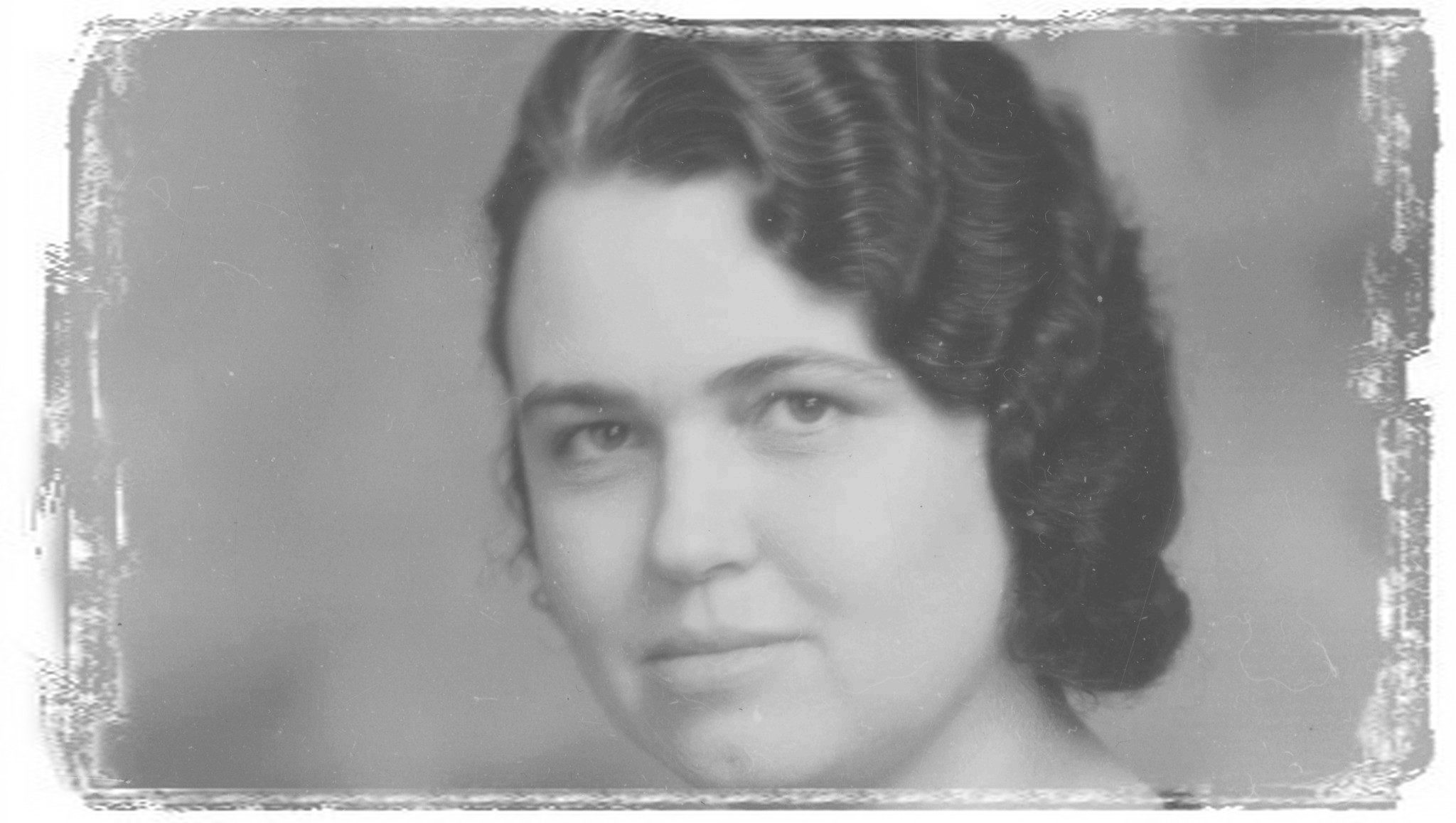
Post written by Archive & Collections team.
Get Inspired!
In celebration of the 100th anniversary of the ratification of the 19th Amendment, we’re highlighting the paths of local women in Fort Collins history with a series of video presentations created by the Archive & Collections staff at Fort Collins Museum of Discovery.
Today Archive Assistant Barbara Cline will present on Hope Sykes, author of the 1935 book Second Hoeing.
After you have learned about Hope Sykes, be sure to create your very own shrink-plastic charm.
Click here to download the printable Hope Sykes Charm.
Want to download the charm bracelet directions? Click here for a handy PDF!
Follow along with our Daily Discovery! Click here for all activities that you can do at home.
Educational opportunities like this are supported in part by Fort Fund.


Post written by Archive & Collections team.
Get Inspired!
In celebration of the 100th anniversary of the ratification of the 19th Amendment, we’re highlighting the paths of local women in Fort Collins history with a series of video presentations created by the Archive & Collections staff at Fort Collins Museum of Discovery.
Today Archive Assistant Sarah Frahm will share stories about Elizabeth Case, Fort Collins volunteer extraordinaire!
After you have learned about Elizabeth Case, be sure to create your very own shrink-plastic charm.
Click here to download the printable Elizabeth Case Charm.
Want to download the charm bracelet directions? Click here for a handy PDF!
Follow along with our Daily Discovery! Click here for all activities that you can do at home.
Educational opportunities like this are supported in part by Fort Fund.


Post written by Archive & Collections team.
Get Inspired!
In celebration of the 100th anniversary of the ratification of the 19th Amendment, we’re highlighting the paths of local women in Fort Collins history with a series of video presentations created by the Archive & Collections staff at Fort Collins Museum of Discovery.
Today Archive Assistant Jenny Hannifin will introduce us to Sara Ellis Eddy, a Fort Collins businesswoman who lived here in the 1890s.
After you have learned about Sara Ellis Eddy, be sure to create your very own shrink-plastic charm.
Click here to download the printable Sara Ellis Eddy Charm.
Want to download the charm bracelet directions? Click here for a handy PDF!
Follow along with our Daily Discovery! Click here for all activities that you can do at home.
Educational opportunities like this are supported in part by Fort Fund.

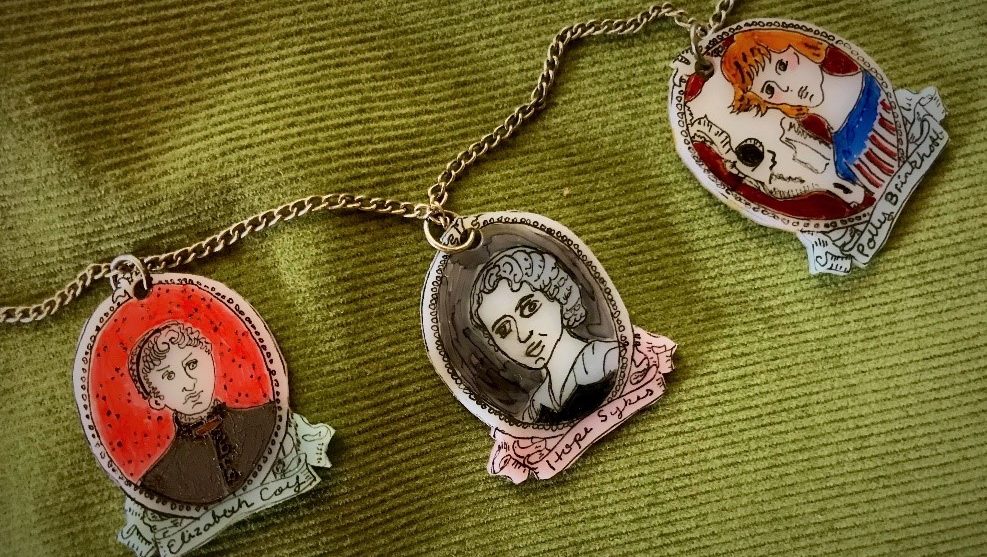
Post written by Linda Moore, Museum Curator of Collections.
Wearing charms to commemorate or celebrate people, places, or events important to you has a long history: there is archaeological evidence that charm bracelets were worn as long ago as 600 to 400 BCE! Celebrate the stories that FCMoD is presenting of some of our distinguished local women this month by using the templates that will accompany each presentation to create a charming piece of jewelry that will remind you of them every time you wear it!
Supplies:
Instructions:

This charm bracelet, in the collection of the National Museum of American History, commemorates the effort to ratify the Equal Rights Amendment with charms added for each state that successfully ratified the amendment.
Want to download these directions? Click here for a handy PDF!
Follow along with our Daily Discovery! Click here for all activities that you can do at home.
Educational opportunities like this are supported in part by Fort Fund.
